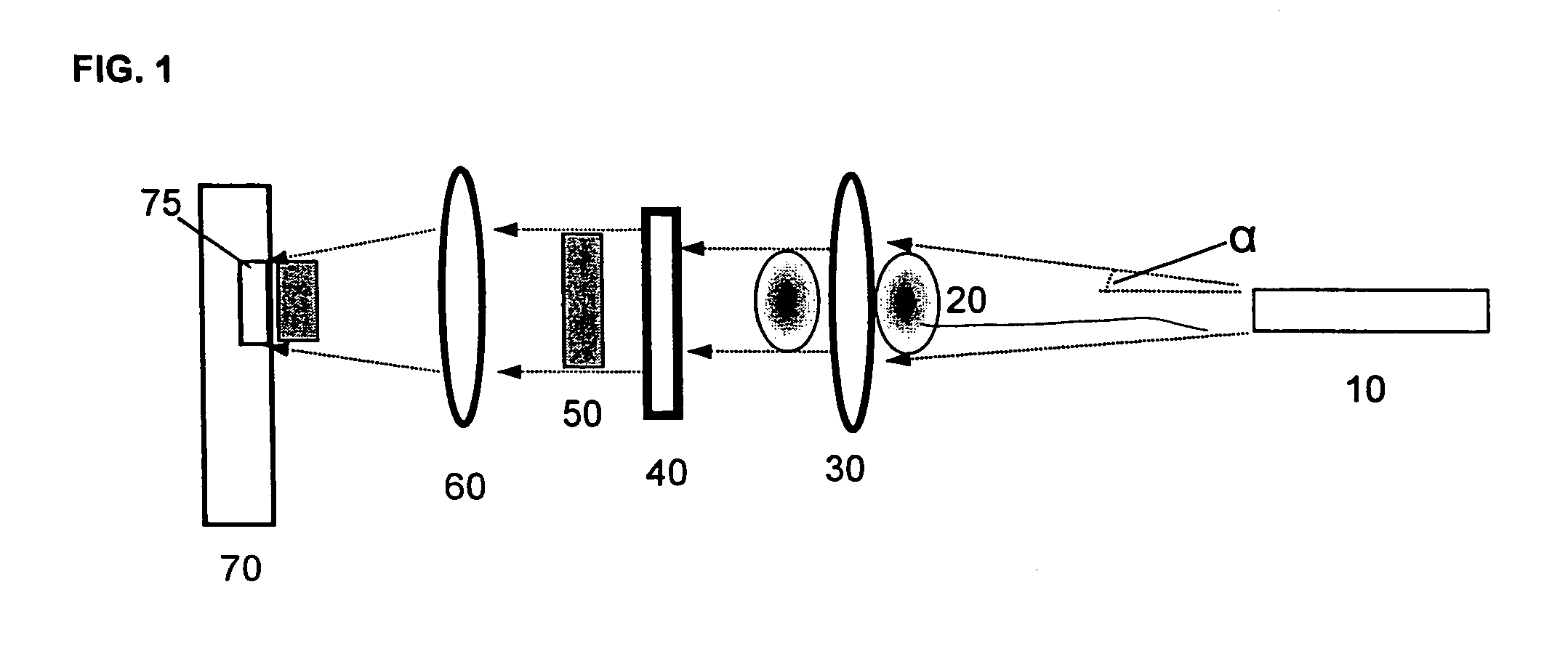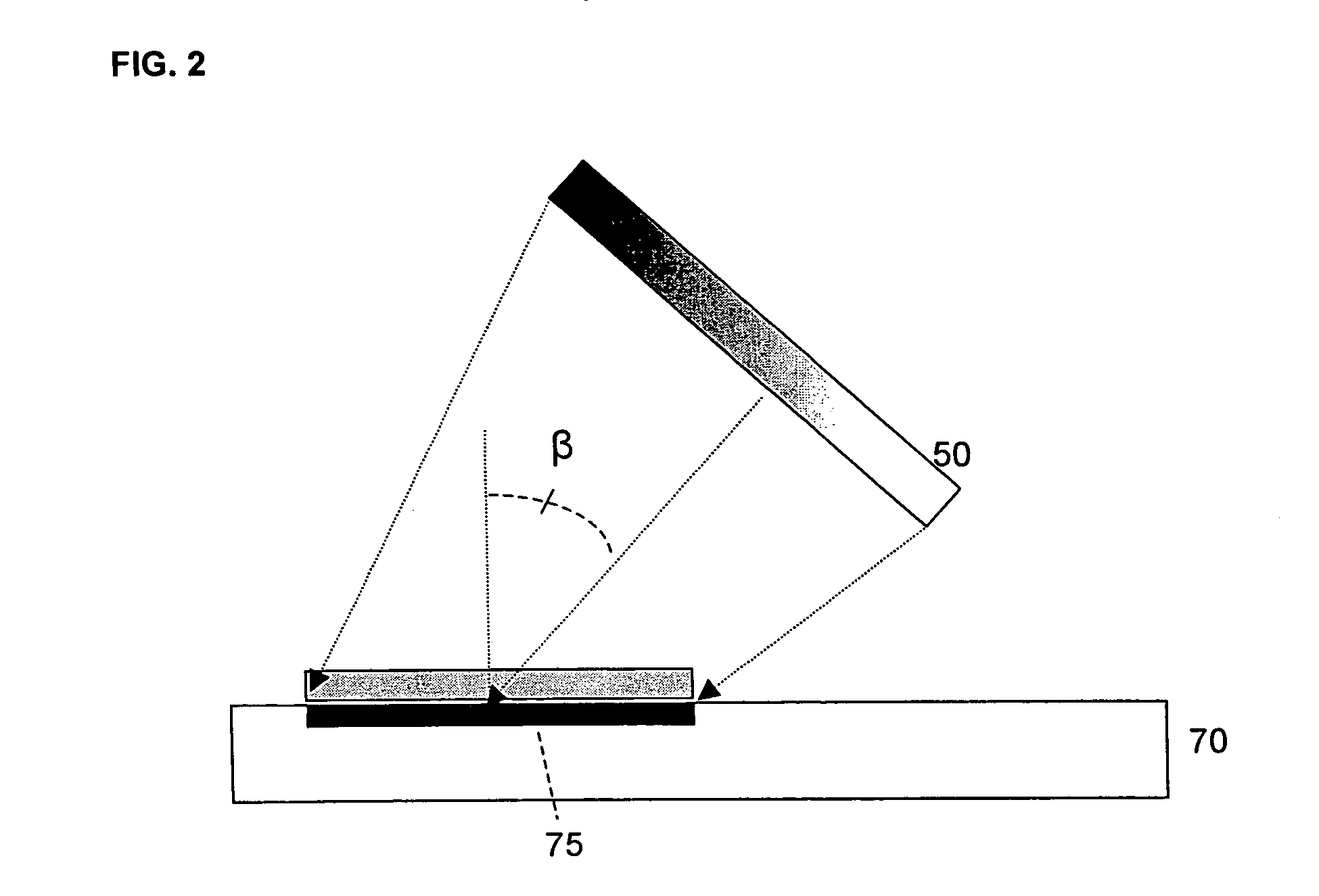Shaped illumination geometry and intensity using a diffractive optical element
a technology of optical elements and geometry, applied in the direction of optical radiation measurement, fluorescence/phosphorescence, spectrophotometry/monochromators, etc., can solve the problems of difficult to efficiently provide illumination and undesirable optical signals, and achieve the effect of greater degree of uniformity
- Summary
- Abstract
- Description
- Claims
- Application Information
AI Technical Summary
Benefits of technology
Problems solved by technology
Method used
Image
Examples
Embodiment Construction
[0016]Reference will now be made in detail to certain embodiments of the invention, examples of which are illustrated in the accompanying drawings. Wherever possible, the same reference numbers will be used throughout the drawings to refer to the same or like parts.
[0017]The section headings used herein are for organizational purposes only, and are not to be construed as limiting the subject matter described. All documents cited in this application, including, but not limited to patents, patent applications, articles, books, and treatises, are expressly incorporated by reference in their entirety for any purpose.
[0018]It should be understood that the phrases “uniform illumination” and “uniformly illuminate,” as used herein with respect to the illumination of a selected region, refer to the variation in optical intensity of the light across the selected region. The lower the variation, the more uniform the illumination. Thus, uniform illumination can be characterized qualitatively as...
PUM
| Property | Measurement | Unit |
|---|---|---|
| diameter | aaaaa | aaaaa |
| diameter | aaaaa | aaaaa |
| area | aaaaa | aaaaa |
Abstract
Description
Claims
Application Information
 Login to View More
Login to View More - R&D
- Intellectual Property
- Life Sciences
- Materials
- Tech Scout
- Unparalleled Data Quality
- Higher Quality Content
- 60% Fewer Hallucinations
Browse by: Latest US Patents, China's latest patents, Technical Efficacy Thesaurus, Application Domain, Technology Topic, Popular Technical Reports.
© 2025 PatSnap. All rights reserved.Legal|Privacy policy|Modern Slavery Act Transparency Statement|Sitemap|About US| Contact US: help@patsnap.com



